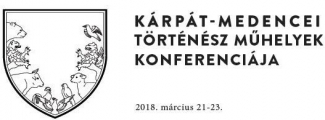
The Kubinyi András Historian Workshop organised a conference between 21–23 March 2018 at the Pázmány Péter Catholic University in Piliscsaba. Three members of our research group also participated and gave lectures as well.
Leader of the Fraknói Research Group Péter Tusor was the chairman of the section medieval and early modern period in Hungary. Terézia Horváth, assistant research fellow, of the research group gave a lecture on the Beneéthy and Nyási formulary book, which were the representatives of the synthesis of the late Middle Ages ecclesiastical law in Hungary. She also compared the two variants with each other, explaining the causes and circumstances of the similarities and the differences between them.
Viktor Kanász, assistant research fellow, analysed the church relations during the 16th century in the Hungarian town Kanizsa. He pointed out the importance of the thesis of confessionalisation, which also contradicts the long believed fact that the reformation could be attached with fix dates, rather than the idea that confessions lived and developed parallel with eachother. He proved the latter was more accurate in the example of Kanizsa as well.
Assistant research fellow Ádám Porubszky compared the two images of the Counts of Cilli in Hungarian and Slovenian historiography. Until the second half of the 20th century the dynasty was the symbol of evil, manipulative and alien nobles not just for historians, but dramatists and writers alike in Hungary. On the other hand, former historians related to Slovenia had romantic and nationalistic approach towards the Counts, whom they long considered the medieval representations of the Slovene nation at the time.
